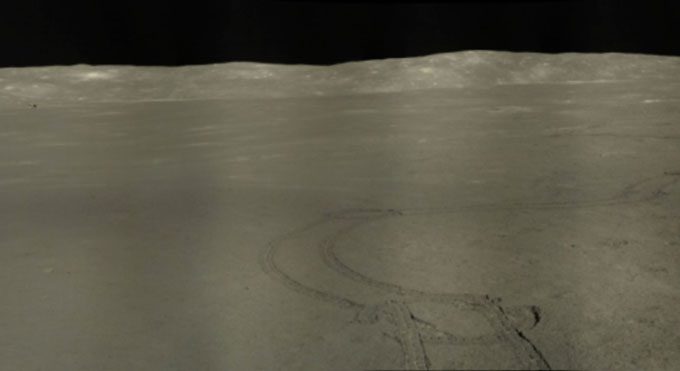Yutu-2, the robot operating on the far side of the Moon, captures its winding journey alongside its “companion,” the Chang’e 4 lander.
The Chinese robot Yutu-2 has sent back images chronicling its three-year exploration of the harsh environment on the far side of the Moon. These new images were released by Ourspace, a Chinese science information channel associated with the China National Space Administration (CNSA), at the end of February.

A section of Yutu-2’s journey on the Moon’s surface. (Photo: NASA/GSFC/Arizona State University)
Among these images is a panoramic photo of Yutu-2’s most recent journey. The robot’s winding path is clearly visible in the photo. Additionally, viewers can spot the Chang’e 4 lander in the distant left side of the image.
Weighing 140 kg and powered by solar energy, Yutu-2, along with the Chang’e 4 lander, landed on the far side of the Moon in January 2019, becoming the first duo of spacecraft to land and operate in this region. Since its landing, Yutu-2 has traveled 1,029 meters within the Von Kármán crater, according to new data from China’s Lunar Exploration Application System.
In January, Yutu-2 reached the crater’s rim to investigate an “mysterious ‘cabin’“ discovered late last year, determining it was merely a rock. From this advantageous position, the robot could see the wheel tracks it left on the lunar soil and its “companion”, the Chang’e 4 lander.
Yutu-2 has made several notable discoveries during its mission, including materials potentially originating from beneath the Moon’s crust and glass spheres that may have formed due to meteorite impacts.
Meanwhile, NASA’s Lunar Reconnaissance Orbiter (LRO) has been observing Yutu-2 from orbit. The LRO’s website has also published images capturing the landing site and the robot’s movement over time.
Yutu-2 and the Chang’e 4 lander have far exceeded their intended operational timelines, which were three months and one year, respectively. They operate during sunlight, which corresponds to about two Earth weeks, and then take a break to endure the long, frigid lunar night. The 40th lunar day of the mission began on February 23 and ended on March 9.





















































